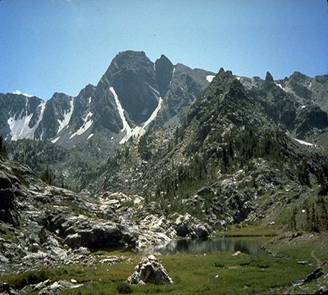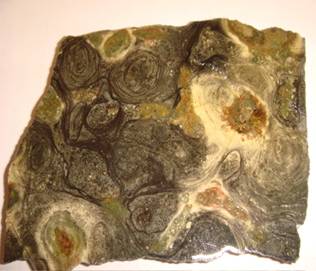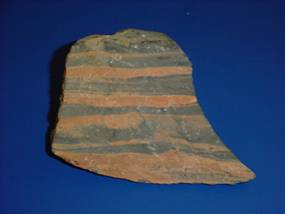A substantially updated version of the hypertextbook is available here. Please migrate to that version. This one will eventually disappear.
Biofilms as Natural Phenomena

Biofilms are not exclusively laboratory phenomena, nor are they found only in habitats altered by human intervention such as polluted streams, ships hulls and urinary catheters. Biofilms are also formed in pristine natural habitats such as this alpine lake. In fact, for every bacterial cell found in the liquid phase of the stream, there are 1000 to 10,000 cells attached to the surface of the rock substrate.
These communities are ubiquitous. They are found in every habitat in which water is found. From the frozen deserts of the Antarctic, to the depths of the ocean, and to the interstices of rock buried thousands of feet below the earth's surface, biofilms have been found in abundance. In fact estimates indicate that more than half of the earth's biomass is composed of biofilm. Imagine this: Greater than 98% of all bacteria are found in biofilms and more than 50% the earth's biomass is biofilm. This suggests that biofilms are the dominant communities on planet earth.
Biofilms, the Earth's Oldest Residents

The best estimates indicate that the earth is about 4.5 billion years old. This is not a number than can be determined directly from earth rocks. Age determination of several types of meteorites indicates ages for the solar system converging on that 4.5 billion year old figure. The oldest earth rocks are on the order of 3.8 billion years old and this is based upon radiometric data; it is worth noting that some of these rocks contain minerals that are even older.
The earliest evidence of organisms in the fossil record comes in the form of stromatolites, thought to be fossilized remnants of cyanobacterial biofilms (Figure 2). The oldest of these fossils are dated at 3.4 billion years old, once again based upon radiometric dating.
For two billion years after they first appeared on Earth, these photosynthetic biofilms produced biomass in prodigious amounts with oxygen as a by-product. During that early period the oxygen was almost instantly tied up in chemical reactions with the components of a highly reducing atmosphere and landscape. But eventually oxygen production outstripped oxygen consumption and for the first time, at about 2.8 billion (check this date) years ago, free oxygen began to appear in the atmosphere. It was at this point that the first curious banded iron deposits, and later the extensive red bed iron deposits, were formed (Figure 3).

What is the evidence that these ancient fossils are of cyanobacterial biofilm origin? In Shark Bay Australia, a highly saline habitat, there are stromatolites living today. These contemporary stromatolites possess the same sort of laminated structure as the fossil stromatolites found in such divergent sites as Glacier National Park, Capitol Reef National Park, the Gunflint formation chert near Schreiber, Ontario, Bristol England and many other sites around the world.
Biofilms are now, and presumably always have been, the dominant life forms on earth. They are responsible for approximately half the oxygen in the atmosphere and essentially all of the nitrogen.
